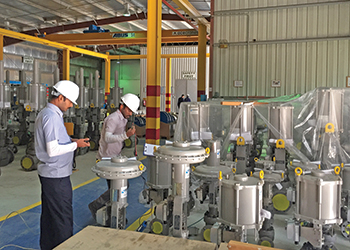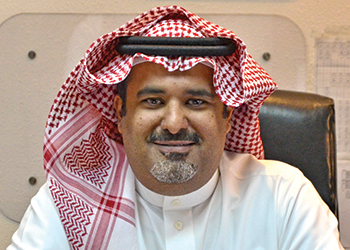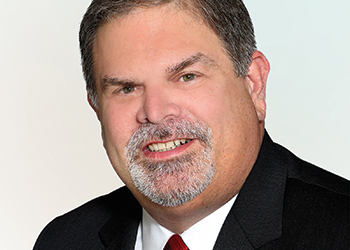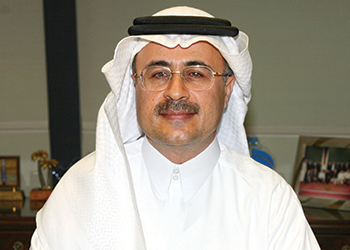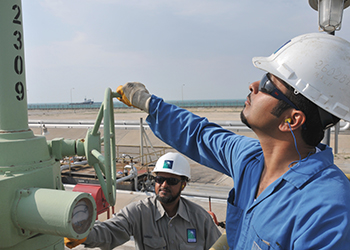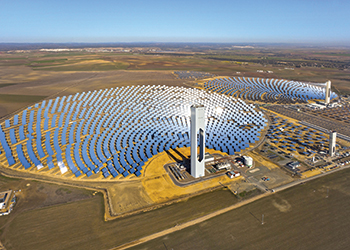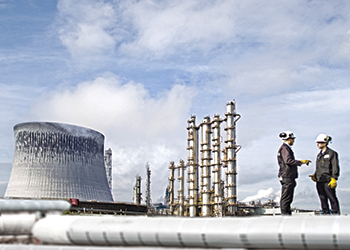
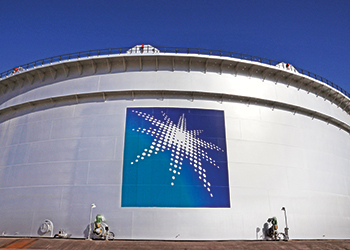 Aramco ... on the cusp of momentous changes
Aramco ... on the cusp of momentous changes
Saudi Aramco plans to spend some $334 billion over 10 years on major projects. The state firm also will accelerate investments in new fields including Safaniya, Marjan and Zuluf fields to maintain steady production over the coming years
Saudi Aramco is planning to spend hugely to maintain oil and gas production capacity, with a focus on offshore fields, and seeking alternative ways of financing these projects, such as a first-ever direct bond sale, industry sources say.
Aramco plans to activate the next upstream expansion, the ageing Berri offshore field, an industry source says. It needs to regularly invest in new megaprojects to offset declines in maturing oil fields, some of which have been in production for decades.
Berri, which produces high-quality Arab Extra Light crude, has a capacity of around 300,000 barrels per day (bpd). Reuters first reported the expansion of Berri, quoting unnamed sources saying that Aramco would add another 250,000 bpd to the field.
The state firm also will accelerate investments in the Safaniya, Marjan and Zuluf fields to maintain output over the coming years. Safaniya, which produces a heavy crude with an API of 27°, has a capacity of 1.5 mbpd, while Zuluf and Majan -- which produce 30° API Arab Medium -- have a combined capacity of around 1.2 mbpd.
US contractor McDermott was awarded an engineering procurement and construction and installation services contract for Safaniya and Zuluf; a number of EPC contractors in the kingdom say Aramco has been active in awarding and re-awarding contracts to both local and international firms of late.
Opec kingpin Saudi Arabia is the only major producer to maintain significant spare oil production capacity. It currently pumps just under 10 mbpd and says it has a capacity of 12.5 mbpd.
Last year, its production was at record highs of 10.6 mbpd, but Saudi Arabia committed to an Opec/non-Opec agreement last year to reduce production to accelerate the rebalancing of oil markets.
The Saudis have wrapped up two expansion projects in the last few years, a 300,000 bpd boost to the Khurais field to bring capacity to 1.5 mbpd, and a 250,000 bpd increase in Shaybah, which now can pump 1 mbpd.
These two projects did not raise Saudi production capacity above 12.5 mbpd, rather they replaced declines and allowed older fields to pump at lower rates.
Back in June 2008, just weeks before oil hit its all-time high of $147 per barrel, former Saudi oil minister Ali Naimi spoke of plans to increase the kingdom’s production capacity to 15 mbpd, adding 900,000 bpd from Zuluf, 700,000 bpd from Safaniya and 300,000 bpd from Berri.
Aramco does not publish data on its capital expenditure, but the company plans to spend some $334 billion over 10 years, its vice president of procurement and supply chain management, Abdulaziz Al Abdulkarim said last August.
 |
Falih ... considering using Malaysia as a springboard for investments |
Also last year, Saudi Deputy Crown Prince Mohammed bin Salman announced his intention to sell up to 5 per cent of Aramco to raise $100 billion, which would be funneled into a newly revamped sovereign wealth fund.
Aramco is preparing to reveal its financial statements to the public for the first time this year, ahead of the initial public offering in the second half of 2018. It is looking out for alternative sources of financing to capex -- including for the expansion of offshore production, according to a source at the company.
Aramco is looking at issuing bonds, following Saudi Arabia’s $17.5 billion sovereign bond debut last year.
The company has only sold bonds via joint ventures in the past but the move would save Aramco from having to delve into its cash reserves, which may reflect badly on its balance sheet. Aramco is looking to raise up to $10 billion in bond sales in 2017.
Meanwhile, Saudi Aramco secured a market for up to 210,000 bpd of its crude by agreeing to join Petronas at the latter’s flagship refinery project in southern Malaysia.
The two state-owned firms signed a share purchase agreement that will see them "hold equal ownership in selected ventures and assets" of the Refinery and Petrochemical Integrated Development (Rapid) project in Johor, according to a joint statement.
Malaysian Prime Minister Najib Razak put the size of the Saudi investment at $7 billion.
Under the deal, Aramco will supply up to 70 per cent of the crude feedstock to the refinery, which is to have a capacity of 300,000 bpd. Petronas, which had previously indicated the plant would run mostly on Iraqi Basrah Light, will supply the natural gas, power and other utilities.
The Rapid project, located within the Pengerang Integrated Complex, will also feature a petrochemical plant with an annual production capacity of 3.5 million tonnes. It remains unclear whether Aramco will be involved in this component.
The agreement, which had been years in the making, gives Aramco a new outlet for its crude at a time when it is struggling to maintain market share in Asia, and will boost its current global refining capacity of some 5.4 mbpd through a world-scale project.
It will also provide Petronas with much-needed cash as the company had previously been shouldering the entire expected $27 billion cost of the Rapid project on its own.
However, it seems the ambitious plans for Rapid have been scaled down. The complex was initially set to have annual petrochemical output of 7.7 million tonnes but Petronas has failed to attract chemical investors and may have opted to downsize the whole development.
Sources say the Saudis were on the brink of walking away from Rapid themselves owing to a lack of guarantees from the Malaysian government.
However, saying that the three years it took to negotiate a role in Rapid was not bad compared to the 10 years it took to agree a partnership at the Fujian refinery and petrochemical project in China, where the company works with Sinopec and ExxonMobil.
 |
Petronas ... having Aramco as partner for the Rapid project |
According to Petronas CEO Wan Zulkiflee Wan Ariffin, the Pengerang complex is approximately 60 per cent complete and the refinery is on track for start-up in 2019.
The deal came amid a landmark four-day visit to Malaysia by Saudi King Salman, who kicked off a month-long tour of Asia aimed at strengthening ties with regional governments, boosting security cooperation and canvassing interest in Aramco’s upcoming initial public offering.
Following the Rapid agreement, Saudi Energy Minister and Aramco chairman Khalid Al Falih urged the kingdom’s private sector to consider using Malaysia as a springboard for investments in the Asia-Pacific region within their respective markets, according to a Reuters report.
Malaysia and Saudi Arabia signed preliminary agreements for joint ventures and cooperation worth over $2 billion across varioous sectors, according to the Southeast Asian country’s trade minister.
Meanwhile, Saudi Aramco plans to launch what it hopes will be the world’s biggest initial public offering (IPO) of shares to investors next year. Before it does so, however, it must first figure out how to balance the sovereign interests of Saudi Arabia -- a deeply conservative Middle Eastern kingdom -- with the public disclosure requirements that accompany a listing on a major international stock exchange.
National oil companies from China, Russia and other countries have sold stock to international investors in the past. But the Saudis have indicated that the Aramco IPO would be far bigger than previous stock offerings in the oil industry -- or any other industry for that matter.
They have suggested that Aramco -- the world’s biggest producer and exporter of oil -- could be worth as much as $2 trillion. Investors will be offered up to 5 per cent of the company’s shares, which would imply a value of up to $100 billion if Aramco’s math is more or less accurate.
Aramco technocrats were blind-sided by the IPO plans, which are central to Deputy Crown Prince Mohamed Bin Salman’s "Vision 2030" programme to diversify the Saudi economy and reduce dependence on oil. Many of the company’s executives remain privately unconvinced that such a bold objective can be achieved in such a relatively short time frame. Nevertheless, an all-out effort is under way with the aim of launching the IPO in the second half of next year.
Aramco has reached out to state-controlled oil companies such as Norway’s Statoil that have been down the IPO road themselves in the past. It is also seeking advice from banks and consultants with relevant experience. Financial sources say JPMorgan Chase, HSBC and Morgan Stanley are among banks being considered for key roles.
Teams are hard at work, setting out various options and key milestones that will have to be met along the way. Key goals include attaining the highest possible valuation for Aramco’s shares and a broad base of international shareholders. However, as the IPO amounts to a monetisation of a portion of the country’s oil wealth, senior members of the royal family will have the final say on the most important decisions, including the stock exchange that is selected for the listing.
Sources familiar with the preparations for the IPO say that Aramco will publish financial results for the first time ever as part of the process. Results for 2015 and 2016 will be published and numbers for 2017 could also be released before shares are offered to investors. Among other things, this might shed some light on Aramco’s share in the costs of subsidizing energy prices for Saudi consumers. The government in Riyadh has already taken steps to lighten this burden and rein in domestic energy demand that has been boosted by below-market prices.
Listing Aramco’s shares on a major stock exchange such as New York or London would certainly raise the company’s profile among international investors. But strict rules about disclosure of reserves -- a sensitive issue for the Saudis -- could be a sticking point. A US listing also carries political and legal risks, following the election of Donald Trump as president and passage of a law last year that limits sovereign immunity, making it easier to sue foreign countries in US courts.
Aramco is still mulling its options, but is now thinking about disclosing some information about its reserves, which have previously been cloaked in secrecy and considered a matter of national security. Falih says Saudi oil reserves will be included in the valuation of the company.
"The intent is definitely to have the reserves as part of the offering, so the reserves monetisation will be a right within the concession of Aramco," he says recently, while emphasising that the reserves will remain the property of the state.
"The state will give Aramco, through the concession, the exclusive right to monetise those reserves and the Aramco IPO will offer investors an ownership in that right," he adds.





















































































